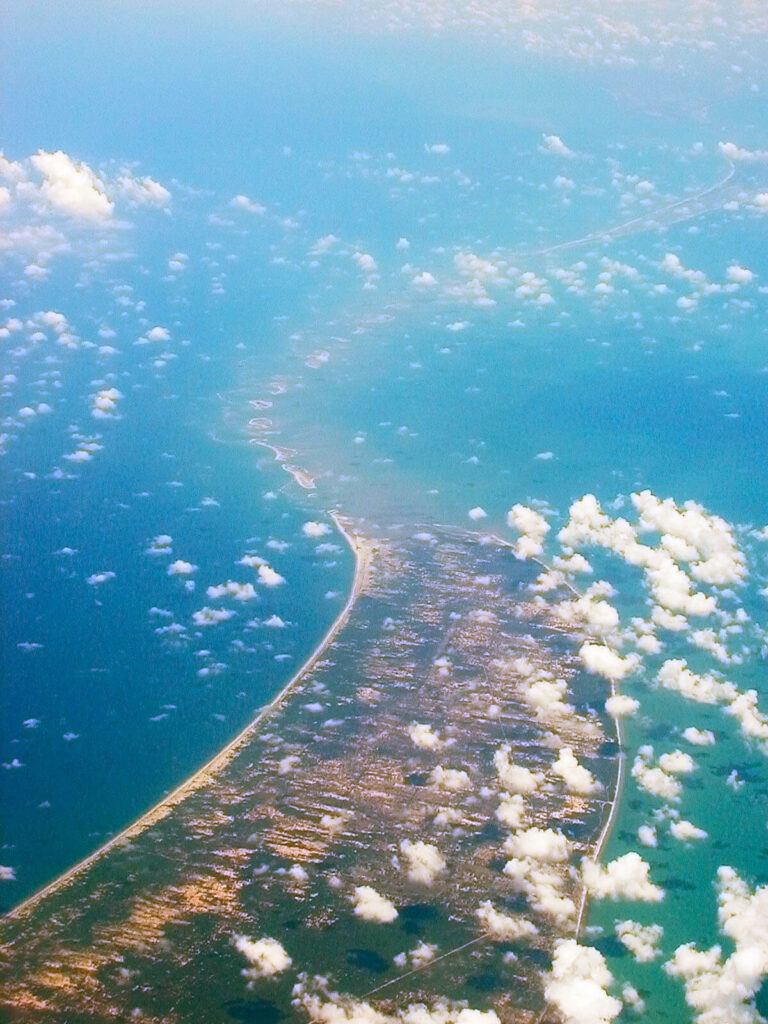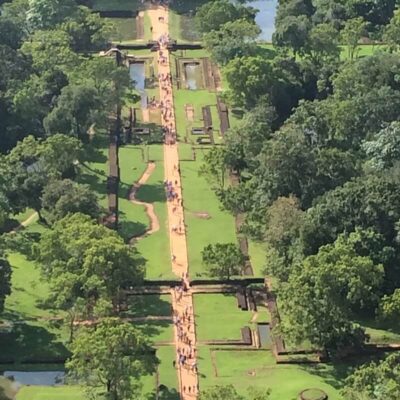Rama had lived in Ayodhya during his childhood and as an Emperor later. After receiving his basic education from Vasishta, he had gone to forests with Vishwamitra Rishi for higher education and thereby to get the skill in martial arts. After marriage, for the next fourteen years, he used to live in forests in order to fulfill his father’s words as befitting to the Raghu lineage. Hence, the construction of huts and hermits were necessitated for Rama, to live in the forests areas. Construction works have been taught in Gurukula system and management of projects were personally monitored by administrative aspirant people then and there, in those days.
Also, in those days there was not a separate pedagogical branch, such as now called Civil Engineering. But it was taught in the school of Vishwakarma to the aspirants, clubbed with other applied sciences. The palace of Rama was magnificent in all respects. All facilities as required in the case of a planned city were available in Ayodhya then.

महेन्द्रे भोजनस्थानं महीधर मरीचयोः । संबाधं वाऽत्र कुर्वीत सभापार्वत कूर्मवत् ॥
Meaning: The food court was convenient. Mahendra, Mahidhara or a chief guest with the king, his family relatives, with servants holding high ranks could conveniently be able to take food together in the royal fashion there. The conference of dignitaries would appear like the hills of tortoise. It was a show of gigantic size royal banquet. This verse was in Mayamatam, the book of architecture authored by Mayasura, for construction of dining halls near palaces. Royal Buildings were constructed in compliance to Mayamatham grading.
One could compare the camps, tents and hermit’s premises of Bharadwaj Ashram or Shukracharya’s Mandir at Shonithapura (Guwahati) with the current campus structures of the university buildings for the award of ratings.
Original Lanka was a small place, (in Assam, having a small railway station with pin code 782446), where the family of Vishrava had lived with his sons Kubera and Ravana. Vishrava was a priest in the Umananda Temple of Shonithapura. After completion of education of Kubera, the brother of Ravana, he left the Shukracharya Ashram and reported to God Shiva to further work as treasurer for him. The treasury was in the north, at Mount Kailasha. Ravana, the son of Vishrava, was a small boy then. He started his education under Shukracharya, by residing at his Ashram, the place very near to Lanka and within Shonithapura on the banks of Brahmaputra River.
In the childhood, Ravana was very obedient to his teacher Shukracharya. One day he was ordered to collect some Darba grass, plants and twigs for Navagraha rituals from the banks of Narmada River and return early. But when he started to return back, after the collection works of the required Darba grass and relevant items, like twigs for routine rituals, it was time for his evening prayer. So he sat on the bank of Narmada River and with the water, finished the evening prayers but then, one strong and cruel King called Kartiviryarjuna felt angry upon Ravana. He started quarrelling with Ravana accusing him as Ravana had polluted the water. The king was very defiant and had grabbed the cow from the hermit of Jamadagni.
Even though Ravana was a boy, he could recognize Kartiviryarjuna and Jamadagni both. And as Kartiviryarjuna started beating Ravana, he called Parasurama, the son of Jamadagni for help. Parasurama came there, fought with Kartiviryarjuna and finally killed him. Parasurama advised Ravana to return to the Ashram of Shukracharya early and try to learn maximum lessons under his tutorship. Shukracharya had taught Ravana all the branches of Vedas and finally instructed to do penance to get the grace of nine angels of planets. Along with his father, Ravana had performed his penance. His father had introduced him to Mayasura who was going to Shri Lanka for the construction of a house, intended to reside by God Shiva after his marriage. Later Shukracharya had left for the Marriage of God Shiva. Then Ravana thought Shri Lanka Island could be better than his village Lanka under Nougaon.
Mayasura had gone to the Island Shri Lanka and had built a house; say a palace for God Shiva to reside after his marriage. When Mayasura completed and returned, he started to search for a priest for conducting the warming ceremony at Shri Lanka Palace. Vishrava told him Ravana, his son had completed his education and he would be able to do it. Hence Mayasura accompanied Ravana to Shri Lanka and the house warming ceremony was completed by Ravana as a priest. After marriage, God Shiva had returned to Mount Kailasha and told to Kubera to add Shri Lanka Island in his accounts.
Ravana was hunting for a job as a priest then. He pleased his teacher Shukracharya. Also, through his reverence towards him, he pleased his father and God Shiva was also worshipped by him. He gained good strength and one day he approached Parasurama and sought a job. Parasurama had instructed Ravana to sit again for penance. Ravana had started his penance and continued for many years.
Then at Janakpuri, Janaka Maharaj had a gorgeous palace and two daughters. He announced their swayamvara. His first daughter was Sita. Later, Rama married Sita and got the celestial Vishnu bow from Parasurama. Parasurama had abandoned his open weapon, axe, throwing it into sea, and started consecrations of Dharma Shasta temples and continued penance.
Ravana had conducted penance for many years and started to think of getting rich quickly. He decided to lead a life like a Royal Administrator himself.
Soon after Parasurama had abandoned his axe, Ravana had lost the fear of penalty. Ravana had left to Mount Kailasha and grabbed some wealth from Kubera and started to quarrel with him to get Shri Lanka into his own accounts. He went to Shri Lanka and started his own Kingdom there. From the money taken from the treasury of Kubera, Ravana had paid to Mayasura and built a fort around the palace in Shri Lanka. Later in Shri Lanka, Ravana had declared himself as the King. Then, he invited his father Vishrava and mother Kaikasa there. Ravana continued to worship God Shiva and converted the palace into the capital of his country.

सागर वेलाभ्याशे तदनुगतायामि पत्तनं प्रोक्तम् । परनृपदेशसमीपे युद्धारंभ क्रियोपेतम् ॥
Meaning: The town planning was explained in the book of Mayasura, to have access of oceans and provisions for facing any types of wars. The above verse was from the book Mayamatam, on town planning, under the contemporary Civil Engineering as befitting to the periods of Ravana.
Kishkindha was the country of monkeys. Nala was an expert in military sciences and construction of bridges. He had designed the bridge from Dhanushkodi to Lanka over the seas and the secret war camp of Rama, the war which was fought successfully.
Town planning was seen in the later periods also. Towns and palaces had been built at Lakshmipura for Lakshmana, at Lavapura for Lava and at Mathura for Shatrughna. The Rameshwaram temple could be visited by anybody, which reminds the Ramayana forever on this earth.
In order to conduct the Ashwamedha yajna or any fire rituals, specific size fire altars were required. Following the Vedic codes, Ashwamedha yajna and fire rituals were conducted by Rama and Kusha. The construction of altar was called Vedi Rachana. The inviting of angels into the Altars was called Avahana. After accepting the rituals, the angels were sent back to their original abode. It was called Udvasana. Then the fire altars were completely broken and removed and it was called Vedi Nirmulana. Thereafter, there should not be any signs or proof of the rituals conducted on the site.
The methods followed by Rama and Kusha are categorized as Deva yajnas.
Deva yajnas were done in day time only with Cow ghee, vegetarian foods only. Vedi Nirmulana after Deva yajna was easy and there could not be failures. Deva yajnas would be slow, steady and finally peace and happiness is guaranteed. A living Indian cow was tied to a small post to worship near the fire altar. It should not be misunderstood as the small post would be a proof of slaughter. It should be taken as a proof for Civil Engineering and cows worshipped then.
Thus, Ramayana story is made available with the Rivers, Temples and Mountains.
It is humbly prayed for the blessings of God Rama upon us.
Next post, being “Benefits of Apprenticeship and Internship as in Ramayana” may not be missed.
“The Healthy Human Habits” would be presented separately in another article.
Readers may provide feedback and share this story with friends and family.

Leave a Reply